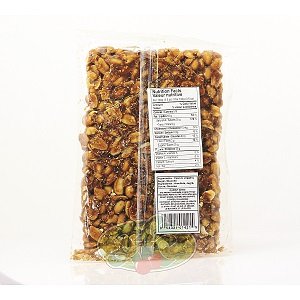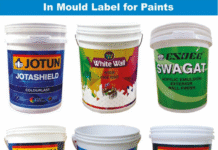The workshop on ‘packaging of ethnic foods’ came up with ideas for the packaging of snacks, bakery products, sea food, pickles, sauces, jams and jellies, and liquid food products. Organized by the Mumbai-headquartered Indian Institute of Packaging (which has regional offices in Chennai, Hyderabad, Kolkata and New Delhi), the day-long event noted India’s current dilemma.

Indian chikki
It’s yummm. It’s largely unknown. And, it’s waiting to be packaged. That’s the story of ethnic food from across India, say indications emerging from an all India workshop for cottage, micro, small and medium entrepreneurs, held in Goa in late December. From chikki (the groundnut-and-jaggery traditional Indian sweet) to cashew nuts (still dependent on manual grading in Goa, where the Portuguese first brought this nut centuries ago), from dry fish to tasty pickles, a lot of products are awaiting effective and economical packaging solutions.
JyotiG Baliga, professor and additional director of IIP, noted that India is coming to be known as the ‘food factory’ of the world, yet there is a 40% loss in fresh produce of
fruits and vegetables “due to improper harvesting, lack of storage facilities, mishandling ,transitloss and more importantly, unsuitable and unscientific packaging.”
She pointed out that India is noting a growth in food grain production, fruits, vegetables and cash crops. India is the second largest food producer after China, tops in cereals and milk, and stands second worldwide in rice, wheat, sugar, fruit and vegetables. India is also third in cotton, and seventh in fish production worldwide.
Further growth is expected, together with growing incomes, falling poverty, changing lifestyles and “companies racing to capture India’s middle and upper middle class consumers,” which would all cause the food market to “evolve dramatically in the coming years,” Baliga said.
India could gain distinction as the land of the ‘spice vada,’ she said, with the medicinal value of spices being increasingly noted. Baliga said there was a need to develop alternate packaging systems which would be ‘easily acceptable’ in the market. Mathematical models capable of predicting the shelf life of packaged product in real conditions of use were needed, she suggested.
India’seconomybeingpredominantlybasedonagriculture,thissectorcontinuesto be the mainstay with some 25% share of the national gross domestic product(GDP), said IIP director NC Saha. Yet, in India, only 7% of its total fresh produce is processed.
Packaging provides information, promotes the product, is a medium of communication and a silent salesman. It protects items from climate, delivers goods in a fresh condition, and enhances storage life, said Saha.
Smallplayerswereintroducedtotheideaofflexiblelaminates.Thesecouldprotect, preserve, embellish, inform and also persuade potential customers, it was pointed out. Flexible laminates are made of superimposed layers of plastics, paper or foil and can be folded to 180 degrees without cracking or needing a pre-crease. Substrate options range from combinations of paper (poster paper ,maplitho, kraft, chromo, glassine),to aluminium foil, plastic film, rubberhydrochloride,polyamides,polyesters,oriented polypropylene,regenerated cellulose, andPVC.
India has accepted the concept of unit pack, and flexible laminates are being used ‘to an extent’ for urban market packaging. With industrial growth, the ‘economy of shortages’ will change soon and that could lead to increased consumer consumption in rural markets too, the IIP says.
Other packaging material including rigid containers were also touched on. For snack foods, extruded items came from both non-traditional (potato-based, starch from cereals and fried) and traditional items (made from flours and spices — sev, boondi, papdi, gathia, chakli, and others).Issues of greaseproofness,rancidity, loss of crispness were outlined.
Bakery products which made it to the workshop table included biscuits (soft and hard, cookies, crackers, fancy biscuits, cream wafers), bread (sweet, milk bread, masala bread, garlic bread, fruit bread), buns (fruit buns, hamburger buns, dinner rolls, crisp bread, pizza), and others (cakes, pastries, doughnuts, muffins).

In coastal Goa, the issue of packaging seafood was also highlighted. Nearly 60% of
fish production in India is from marine sources—including prawn, shrimp, tuna, cuttle fish, squid,octopus,redsnapper,ribbonfish,mackerel,lobster,catfishandothervarieties.Indianmarine exports earn over `5,000 crore (approximately US$ 800million).
IIP points to recently-introduced ‘modified atmosphere packaging’ for fish retailing, and with vacuum packs and active packaging. Fish product life has increased using these technologies, it notes. IIP also presented studies of how pickles in flexible plastic pouches could have extended shelf lives of up to 131 or 136 days in case of vacuum packaging and nitrogen flushing for certain mango pickles.
IIP said it was helping other developing countries to promote packaging through international bodies like the UNIDO (United Nations Industrial Development Organization), the ITC (International Trade Centre), the CFTC (Commonwealth Fund for Technical Co-operation) and the European Union.











